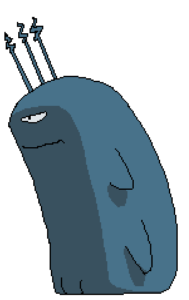 This second week the theme is creativity, a concept that in my opinion is strongly intertwined with other concepts such as imagination, the creation of ideas, and of course innovation. Personally, and especially during my youth I would never have considered that creativity could be the result of an analytical, measurable, repeatable and evaluable process.
This second week the theme is creativity, a concept that in my opinion is strongly intertwined with other concepts such as imagination, the creation of ideas, and of course innovation. Personally, and especially during my youth I would never have considered that creativity could be the result of an analytical, measurable, repeatable and evaluable process.
On the contrary, for years I was convinced that creativity was something more akin to a gift. In my early opinion, you are either born creative or you are not.
After approaching the subject in a more documented and academic way, I now understand that the human being, as such, is a natural creative being, since this is a survival activity, manifested either in our relationship with the environment or applied to the solution of more ‘abstract’ problems.
To my surprise, this whole process can even be stimulated and reinforced in order to obtain concrete and measurable results using one or more of the following tools:
- Brainstorming
With a clear defined problem or theme as starting point, participants are encouraged to add anything that comes to mind to a piece of paper. One idea should trigger another and so on. - Mind Maps
A graphical representation utilized to visually organize information. - Round Robin
A brainstorming session with several groups. - Opposite Thinking
To challenge assumptions and see things from a different angle. Once you have the core assumptions laid out on paper, you are challenged to define an opposite reality for each one. - Collage / Cut-Up
Collecting ideas from several sources as printed magazines, photos, newspapers, catalogs and prints. Next place them together connecting them in new and different ways. - Mash-up
This technique is about bringing odd and mixed up objects together in new and novel ways, creating two very distinct categories. Once the two categories are defined, generate as many elements related to each one as possible in two minutes. - Crazy Eights
The process begins with each participant folding a piece of paper in half three times in succession, so the paper is divided into eight sections. A theme or problem is clearly defined at the beginning of the activity. When the timer begins, each participant is encouraged to come up with one idea for each minute of the activity. Once the activity is finished, each participant gets to select their three favourite ideas from across all the ideas generated. The ideas with the most votes get carried forwards for further development. - Scamper
Combine, adapt, modify, put to other uses, eliminate and rearrange. These words contained within the acronym are actually stimuli for questions:
What could be substituted? What can be combined?
Some of this are techniques that I use on a daily basis, many times without even realizing it. Brainstorming, collages, sketches, mash-ups are part of my professional arsenal and I use them quite a lot. That being said, I found that relying to much only on brainstorming sessions probably is not a the best way around, and can lead to all kind of situations as Matthew Inman (co creator of the card game hit Exploding Kittens) graciously illustrated on his blog, The Oatmeal.

Some others techniques like Crazy eights and Scamper are absolutely aliens to me, I should learn more about this. But one approach that really interest me to explore is the Opposite Thinking, it remembers me the ‘draw with the right side of the brain’ techniques, or flipping the image when a fresh eye is needed after long hours of animating the same scene. Mental note: to do more opposite thinking!
Which is more valuable, good ideas or good people? No matter whether I was talking to retired business executives or students, to high school principals or artists, when I asked for a show of hands, the audiences would be split 50-50.
To me, the answer should be obvious: Ideas come from people. Therefore, people are more important than ideas.
Why are we confused about this? Because too many of us think of ideas as being singular, as if they float in the ether, fully formed and independent of the people who wrestle with them. Ideas, though, are not singular. They are forged through tens of thousands of decisions, often made by dozens of people. In any given Pixar film, every line of dialogue, every beam of light or patch of shade, every sound effect is there because it contributes to the greater whole. In the end, if you do it right, people come out of the theater and say, “A movie about talking toys—what a clever idea!” But a movie is not one idea, it’s a multitude of them. And behind these ideas are people. (Catmull 2014)
Week 2 Challenge Activity
This week challenge is all about taking an existing artefact and to modify it in some new way using the techniques explored before.
I’m not sure if this is exactly what is demanded, but here’s my take on this challenge:
Sometime ago I was thinking about some piece of merchandising to offer during a Kickstarter campaign I was pulling out. I was looking for an item to serve both as a perk and as a promotional item once the campaign was over, to kill two birds with the same stone, so to speak.
As an adventure game there is plenty of interesting characters to choose around, but most of them were ‘humans’ and very hard to ‘translate’ into another object.
After a short brainstorm phase and many long hours of toying around (technically I was using the collage technique, but I was not really aware of it) I came with the following idea:
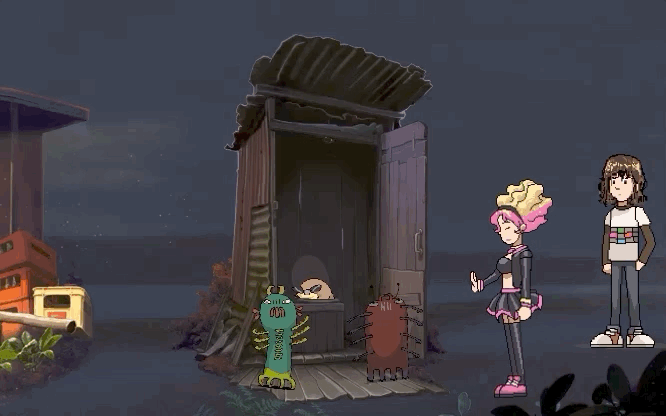
One of the main character in the game was a red alien ‘monster’ of small proportions, rounded and quite funny. Simply enough and very handy to use as starting point. At fist I imagined to shape it like an eraser…

Although it could be fun it did not seem to be too interesting or even super useful, too related to the ‘school and homework’, one thing that I needed to avoid by all means, so I replace the eraser by a USB key. Something more like this:
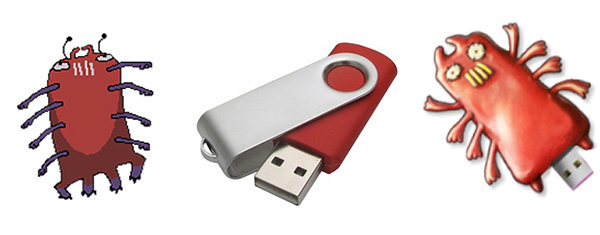
This was a better concept to me as it was interesting enough as a ‘souvenir’ but it also served a very practical purpose: the game was going to be saved inside the key for later distribution!
With that in mind I did a couple 3D models to round the idea and to start looking for a way to manufacture them overseas, in large quantity and within a limited budget.

After about 45 days I received the finished samples and I was quite happy with them, specially because it was my very first time doing something like this right from scratch, learning a lot during the process!
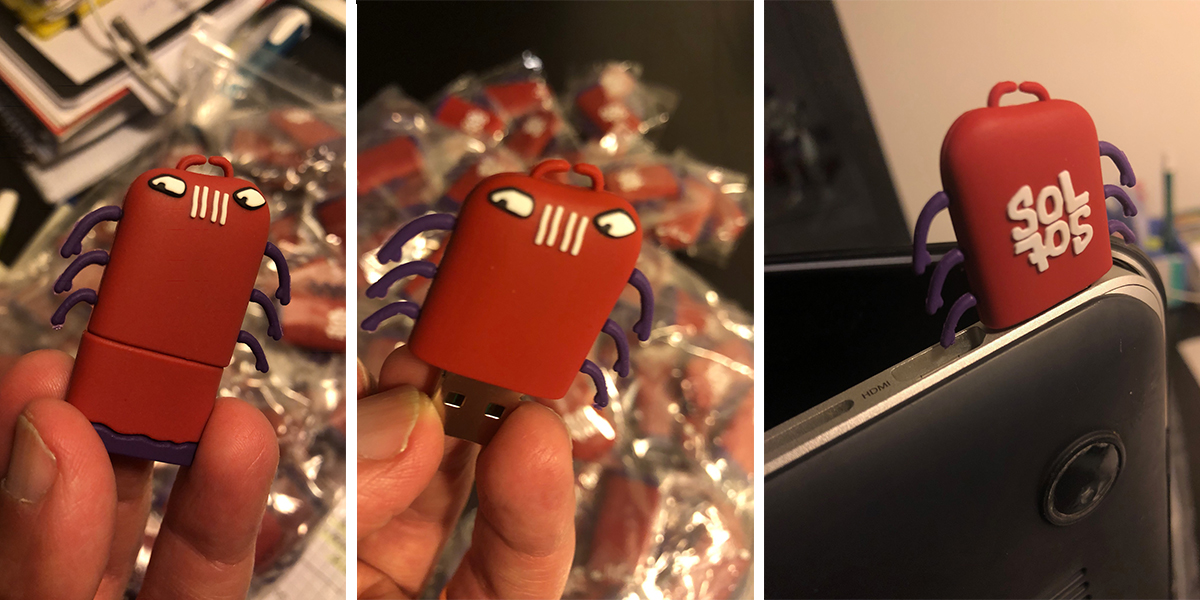
Rapid ideation
As I said, for a long time I also used only a handful of these techniques, either out of ignorance or comfort, specially during the development of a video game created between 2018 and 2020 that used to corner me many times between a rock and a hard place.
Blinded by putting out fires instead of ‘stopping the ball’ and leaning on the techniques I will mention in these lines, I learned this lesson in the worst possible way: redundant work, bottlenecks, budget mismanagement, frustration and endless hours of extra development.
There were many times when faced with a creative block (how is this chapter going to end, I need to put a puzzle at this stage and I have no idea what to do, but it has to be something highly original and creative) my only reliable tool was to stop thinking about it for a few hours and wait for the solution to appear to me in my dreams. Or rather, a few seconds before waking up.
I have used this resource on countless occasions and for different reasons. It usually works quite well for me, although there is no guarantee of how many nights it will take until the answer appears!
In fact, it is arguably the most similar to the ‘incubation’ stage contemplated by the Icedip method, which I will briefly summarize below.
The Icedip Method
This system has been design and implemented by Geoff Petty one of the UK’s leading experts on teaching methods. In his experience the creative process consists of six working phases: inspiration, clarification, distillation, perspiration, evaluation and incubation, all of them supported by a precise state of mind, or mindset according to each phase.
- Inspiration – in which you generate a large number of ideas. This is the research or idea-generation phase, characterised by spontaneity, experimentation, intuition, and risk-taking.
- Clarification – in which you focus on your goals
What am I trying to achieve or say here? / what is the problem I am trying to solve? / what would I like the finished work to be like?
- Distillation – in which you look through the ideas you have generated and try to determine which ones to work on.
The best ideas are chosen for further development or are combined into even better ideas.
- Perspiration – in which you work with great determination on your best ideas.
This will usually involve further ‘inspiration’ ‘distillation’ and ‘clarification’ phases.
- Evaluation – is a review phase in which you look back over your work in progress.
Here, you examine your work for strengths and weaknesses, in a positive way.
Perspiration and evaluation phases often alternate to form a cycle.
- Incubation – in which you leave the work alone, allowing time to your subconscious time to work on any problems encountered and to generate new ideas.
Please note that each of these phases should be encountered many times, sometimes for very short periods, and not necessarily in any particular sequence. This requires enormous flexibility as some mindsets are almost the exact opposite of each other.
Since in this post I want to focus strictly on the creative aspect of the process, I can’t fail to mention another concept -or belief- that also took hours of sleep and left me paralyzed in front of the sheet of paper.
The search for the ‘original idea’
Mark Twain once said that original ideas do not exist. Unfortunately, even as an occasional reader of his novels, this phrase came quite late into my life, although I eventually came to the same late conclusion.
The blockage that can be generated by the obsessive search for an original idea, in this case for a game, has not been fully addressed by the bibliography proposed this week and I would like to add the fruit of my humble research in this regard.
Again paraphrasing Twain, if we start from the assumption that ideas are always the same pieces of stained glass that mankind has been using for centuries, what are we left with then?
According to Cordelia Hebblethwaite the head of the BBC Ideas sector, the portal of the aforementioned television channel in charge of presenting innovative visual proposals, the trick is to take some of these hackneyed ideas with a different approach. It’s really about bringing that old idea to life in a new way. In a recent interview for the BBC portal she brings up the following tips:
- Don’t agonize over coming up with a completely original idea.
- Use juxtapositions to combine two different things that are rarely put together.
- Go for a walk, a jog, a swim, to clear your head.
- Trust the connections you make in your head, this is where individual creativity comes into play.
- Your experience of the world is unique, pull together parts of what you have read, heard or seen.
- Talk to people from diverse backgrounds to get different, valuable perspectives.
- And write things down!
In his book Challenges for Games Designers, Brenda Brathwaite and Ian Schreiber ask the reader to look for game ideas all the time, at every moment of the day.
Challenge yourself to make a game or think about making a game about a topic at least once a day. Right now around you, there are sounds you are completely tuning out: the flip of the page, the sound of your own breathing, and perhaps music or a television in the background. Game design can be tuned out or tuned in the same way. If you actively listen for the possibility and go with it, you will find game ideas everywhere. Anything—anything at all—can be turned into a game.
By the same token, Joe Slack, classic board game creator, encourages his students and people interested in developing their own tabletop games to try one of the following approachs when looking for fresh concepts:
- Think of an experience you’d like players to have or role that would be fun to play.
- Think about creating an expansion to one of your favorite games.
- Create a spin-off of a game you like.
- Come up with a theme you enjoy or would like to see in a game.
- Start with a mechanic you like or would like to use (maybe one you’ve seen in another game)
- Combine some ideas or mash up a couple of games you enjoy and come up with a new idea.
- If all else fails, go to www.boardgamizer.com and use one of the randomly generated combination.
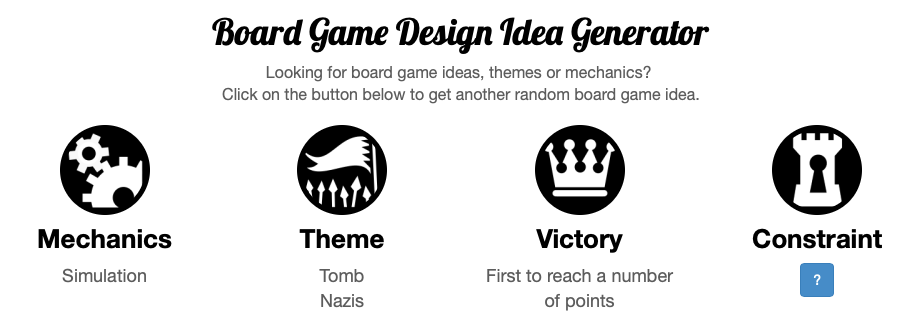
Fig 7 – Boardgamaizer web site provides random ideas for tabletop developers
Ideas generated by an AI ?
A few minutes ago, as part of the Pocket Gamer Digital Event 5 (Feb 8-12 2021), Tom Piggot from Ludo unveiled what he called the world’s first AI idea generator, a revolutionary game-storming tool capable of producing thousands of game concepts everyday automatically, a giant step forward in this field.
Still in beta, the platform has been tested by several studios during the past months and it’s open to everybody who wants -to pay- for the experience in the days to come. If you’re interested be sure to fill this wait list or join Ludo’s discord channel.
As explained during the presentation, Ludo uses machine learning algorithms and user input in form of sentences or natural language to elaborate new ideations in minutes avoiding repetition and duplicated concepts using not only a huge game database (close to 1 million samples) but also a giant image library to illustrate their amazing results.
As has been made clear in the presentation Ludo is not (at least for today): a mind reader, a game developer tool, a job killer.
Only time will tell!
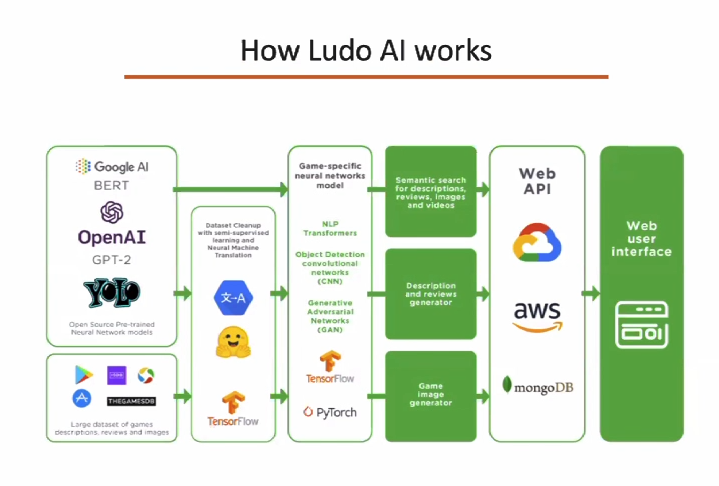
Personal and professional goals
My goal for the near future, in any case for my current project, is to incorporate at least two of these techniques and stop relying so much on ‘creative raptures’ or ‘light bulb moments’ to produce solutions in a more predictive, timely and satisfactory manner, avoiding the need to grab the first idea that comes along, since I should have a few better alternatives using the Icedip approach and some good opposite thinking and continue my research on automated game generation.
List of figures
Fig 1. Illustration by Matthew Inman.
Fig 2. Screen capture from Sol 705 point and click adventure by Patricio Land.
Fig 3 – Fig 6. Sketchs, photos and conceptual art from Sol 705 by Patricio Land, photos by the author.
Fig 7 – Boardgamazer web site screenshot.
Fig 8. (c) Ludo framework scheme by Tom Piggot.
References
Inman, M. ‘There are only bad ideas in Brainstorming’. [online] <https://www.drawright.com/theory> [Accessed 8 February 2021]
Edwards, B. 1979. ‘Drawing on the Right Side of the Brain’. [online]. Available at: <https://www.drawright.com/theory> [Accessed 3 February 2021].
Catmull, R. 2014. ‘Creativity Inc. Overcoming the unseen forces that stand in the way of true inspiration’, Published by Random House.
Petty, G. n.d. ‘Teaching your students to be creative’. Article from 1996 book. ‘How to be Better at Creativity’. Published by Kogan Page. Available at:
<https://set.et-foundation.co.uk/digital assets/qtlsmap/files/standard_4 Teaching%20your%20students%20to%20be%20creative.pdf>
[Accessed 4 February 2021].
Falmouth University, 2020. ‘How to foster for creativity’ [online]. Available at: <https://flex.falmouth.ac.uk/courses/911/pages/week-2-how-to-foster-for-creativity?module_item_id=49144> [Accessed 4 February 2021].
BBC Bitesize, n.d. ‘Original ideas: Do they exist and how do you come up with one?‘. [online]. Available at:<https://www.bbc.co.uk/bitesize/articles/z78x2sg>
[Accessed 5 February 2021].
Slack, J. 2019. ‘The Board Game Designer’s Guide‘. [online]. Available at: <https://boardgamedesigncourse.comg> [Accessed 7 February 2021].
Brenda, B, 2009. ‘Challenges for Game Designers‘. Editorial Charles River Media’.
Piggot, T, 2021. ‘Artificial Intelligence Platform Ludo Revolutionizes Games Creation’. [online]. Available at: <https://www.askludo.ai/blog> [Accessed 8 February 2021].
Foster, J. 2007. ‘How to get ideas – Second edition’. Published by Berret-Koheler Publishers, Inc.
Kline, D, and Tomaszewski, J. 2011. ‘Worst ideas ever – A celebration of embarrassment’. Published by Skyhorse Publishing